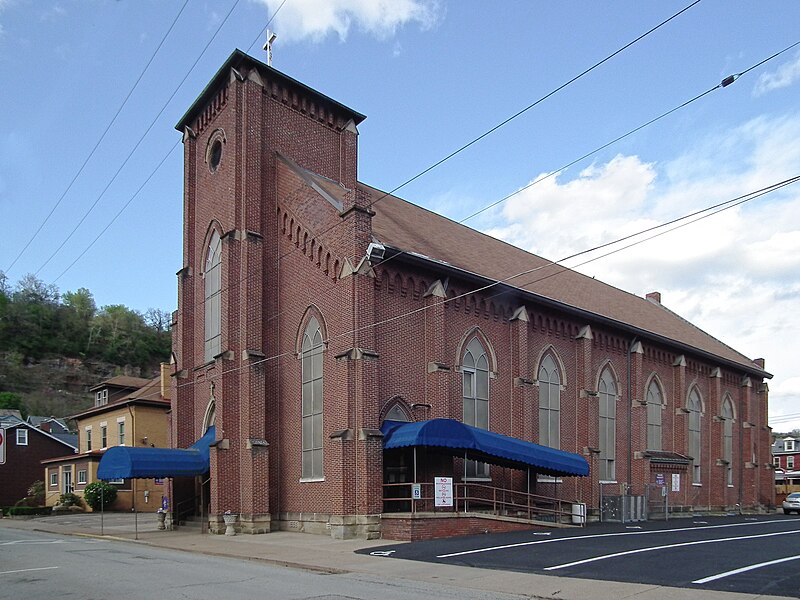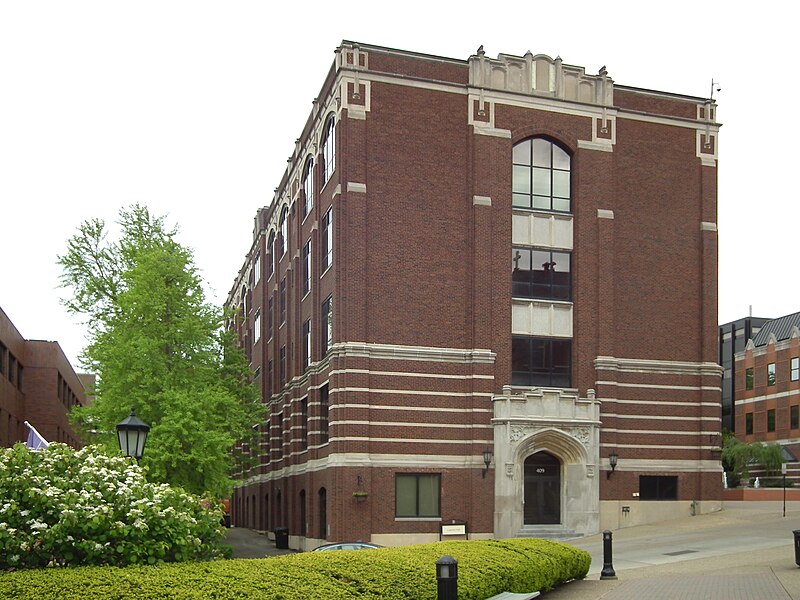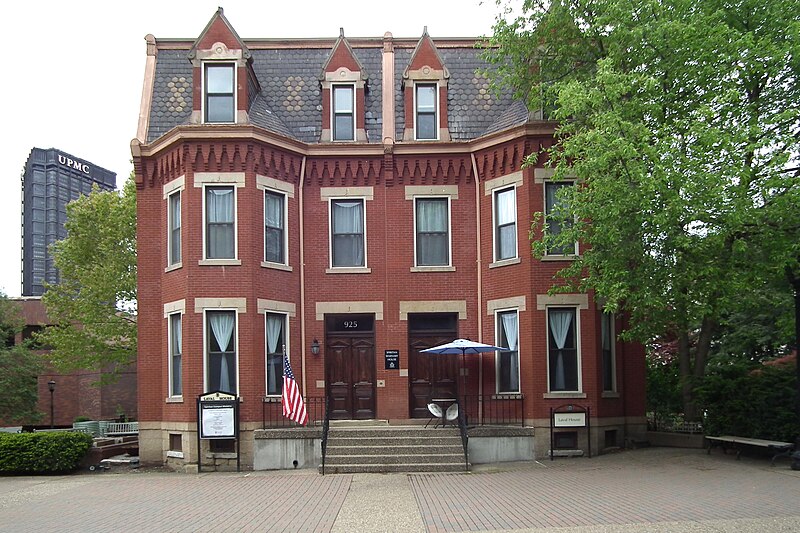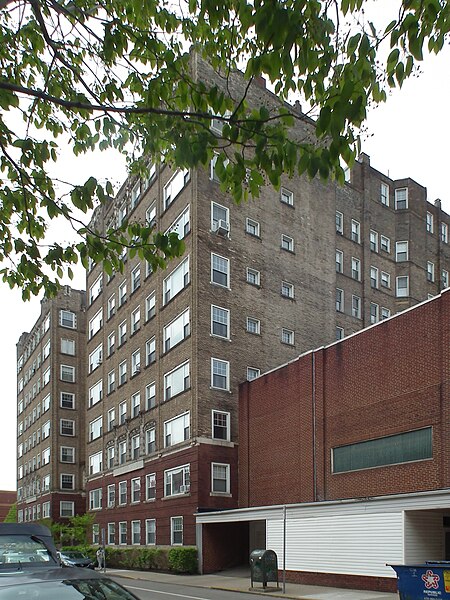
A fine example of Tudor Gothic applied to a small church. This is one of the decreasing number of churches in Homestead still inhabited by their original congregations. It is also one of the few churches dedicated to St. Mark the Evangelist that give us his full name.
Note the tidy little Tudor parsonage in the rear.
Addendum: The architect was Andrew Lisle; the church and parsonage were designed together in 1916 (and therefore probably finished in 1917). Source: “Gets Contract for Church in Pitcairn,” Pittsburg Press, August 6, 1916. “Bids have been received and are now under consideration by architects and owners as follows:… for a church and parsonage for the St. John’s Lutheran congregation at Homestead, Andrew Lisle, Architect…”


































